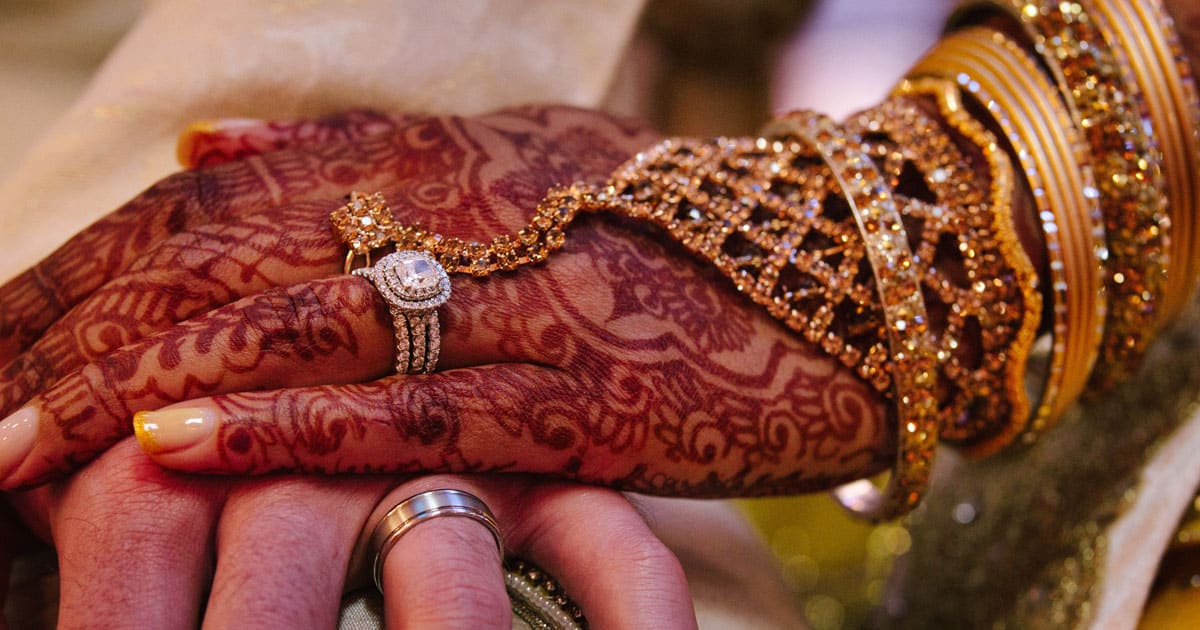Despite being illegal in countries around the world, dowries are still deeply embedded in tradition.
Dowries may seem like a thing of the past but, in some cultures, a dowry is still used in connection with marriage today. This has ongoing detrimental impacts on women around the world, especially in India.

A dowry is a centuries-old custom that is practiced mainly in parts of South Asia, the Middle East, Eastern Europe, and parts of Africa, but mainly in India. It involves a form of payment, usually money or property, given to the groom by the bride’s family on agreement of marriage.
Despite dowries being illegal since 1961 in India, it’s still, unfortunately, a common practice. Indian law statutes cover issues surrounding dowry payments, divorce, and property disputes. Even in the UK, it’s often complicated and dangerous for women. So how exactly does a dowry put a woman in danger? Let’s delve into detail…
Why are dowries a problem?
Women Are Abused and Killed
Dowries have been made illegal in many countries as a result of the number of brides abused and killed each year by their partners and family who have not been satisfied with the dowry received by their family. A common manifestation of dowry-related deaths involves the burning of the wife, which is later presented to authorities as a kitchen stove accident. Unfortunately, this is not an uncommon scenario, according to a study carried out by the United Nations.
Abuse is also a common result of what is deemed as an ‘unsatisfactory’ dowry. Savra Subratikaan, a women’s rights worker in New Delhi, highlighted some of the ways abuse happens:
“The violence ranges from brutal beatings, emotional torture, withholding money, throwing them out of the house, keeping them away from their children, keeping mistresses openly,”
Also, read: This Indian Matrimony Site Has Launched A Campaign For #DowryFreeIndia
More than 8,000 women die as a result in India alone each year. This number includes women who have committed suicide as a result of the treatment received from their partner and partner’s family. The cycle of violence is continued by the lack of convictions seen, with just a third of reported dowry-related murders convicted.
Dowries Prevent Financial Independence
Originally, dowries were once meant to help women achieve some independence in marriage. A dowry meant a wife had time and resources to allow control over decision-making.
Over time, this manifested into a system that encourages dominance over women and created dependency on the husband and his family. India has one of the lowest rates of female workers in the labor force in the world. This is in correlation with the use of dowries.
Dowries encourage the idea that women will be taken care of by the husband’s family, and pursuing a career after marriage is often seen as an affront. As a result, women don’t work and can’t be independent at all in the marriage financially.
Child Marriages Encouraged by Dowries
It may seem shocking to know, but more than 700 million women alive today were married off when they were under 18. Not all, but a chunk of this number would have been married off young to avoid paying out larger dowries.
Organisations that aim to prevent child marriages have predicted that the number of brides married underage will rise to 1.2 billion by 2050. India has the highest amount of child brides in the world, thought to be encouraged by the dowry system.
Dowries Keep Girls from Going to School
Due to the number of women married off young to keep dowries low, families often don’t see value in paying for education for girls as they’re not likely to gain a job after marriage. Often, they are kept at home to train as a housewife in order to become a good wife. This makes schooling seem a waste of time for women, and an expense their families can avoid.
Dowries Worsen Gender Inequality and Infanticide
It’s not a shock that, as a result of how women are dehumanized and seen as a commodity, gender inequality worsens. Women are often seen as burdens rather than an asset, to be passed along to another family with a fee to take care of them.
As women are viewed so poorly in countries such as India, the likelihood that girls will be aborted, or simply uncared for after birth, leading to death, is very high. Each dowry that’s paid just reinforces the negative idea that women are second-class citizens and worsens the gender inequality gap.
Dowries Discriminate Against the Disabled
The dowry system is particularly cruel towards disabled women, or those who have health conditions, as prospective husbands and family will often demand higher payments. Sometimes, this is even extended to women who are deemed as ‘ugly’.
Are the Women’s Rights Movement’s Helping?
As you can tell, dowries are widespread and oppressive, but it doesn’t mean that they can’t be dismantled. There are women’s rights movements growing in India that seek to abolish dowries completely, some of which have had great success.
One ‘stop dowry campaign’ has managed to reduce the use of dowries across three Muslim majority villages from 95% down to 5%, proving successful. At the moment, this campaign targets Muslim communities but aims to influence Hindu communities and other religions.
Another global campaign ‘Because I am a Girl’ aims to put young women into education to avoid being married off young. The idea is that women who are in education rather than being kept at home are more likely to be independent and avoid abusive situations.
Public awareness campaigns are vital to breaking down the harmful practice of dowries as well as de-stigmatizing the act of reporting abusive partners. The law in India has made dowries illegal, but enforcement remains an issue.
